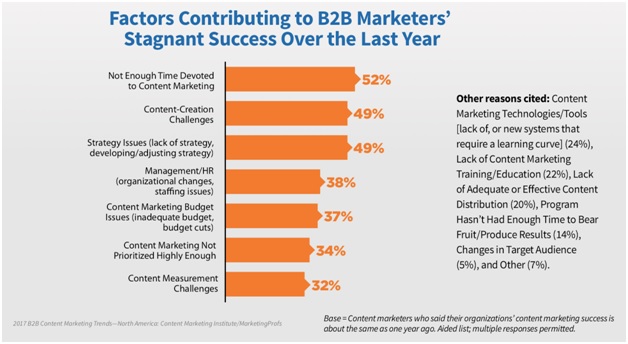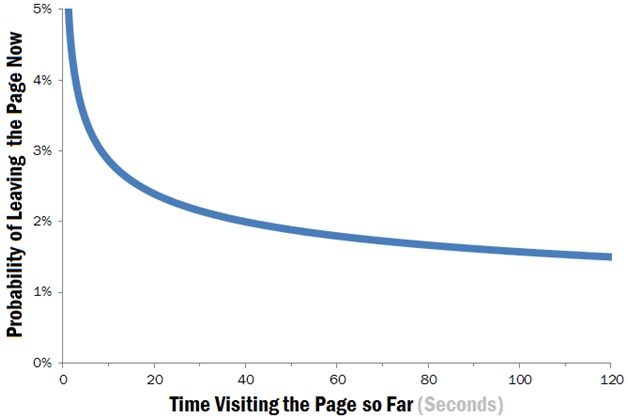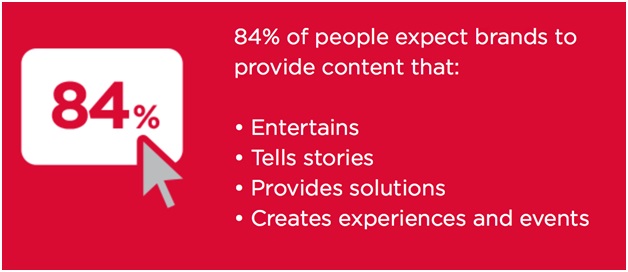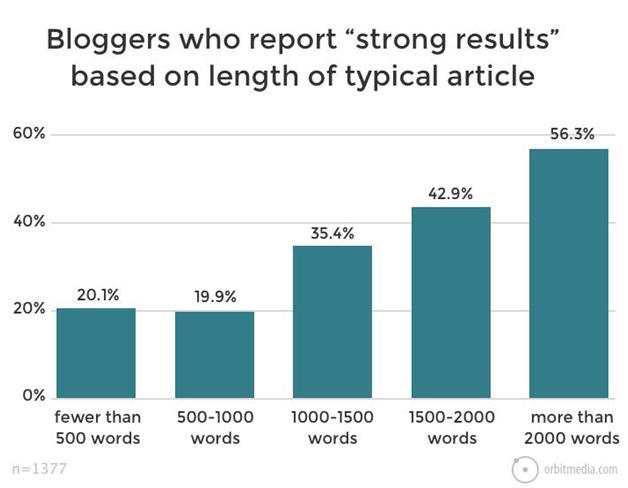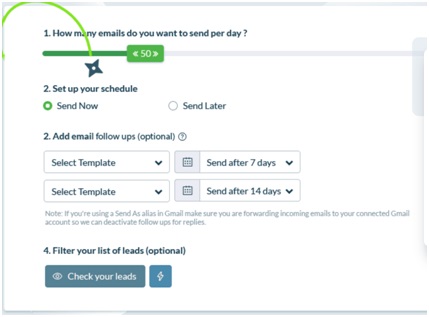Are you interested in becoming a content marketer, or you have actually already started but are still wet behind the ears? Then this article about content marketing best practices is for you.
Don’t be fooled by how pedantic it seems to sound. Seasoned content managers still swear by these. And the sooner you learn the rules of the trade, the sooner you are to getting well on your way to content marketing success.
Just exactly what are best practices, anyway?
Technopedia describes best practices as techniques, methods, or processes considered as the most efficient ways to achieve the same desired result. These are often written out as part of a company’s content marketing strategy to ensure that you reach your goals with as few errors as possible.
Most content marketing best practices are standard while others change as content marketing strategies evolve. That’s why it pays to know what these are even if you’ve been doing content marketing for some time.
In this post, I will be sharing with you ten current content marketing best practices you need to observe to stay ahead of your competition and achieve the results you desire.
1. Quality writing matters
I decided to start off with this content marketing best practice because this is the most important. No matter how well you execute the other nine I will mention, if you don’t observe this, all others will be useless.
A well-written piece of content is the heart of any successful content marketing strategy. Stuffing your article or video script or ebook with keywords (which is, by the way, a big no-no) won’t be able to mask poorly written content.
That said, make sure that you give your content the time and attention it deserves. Do some research for the information you’ll share, and make sure that your sources are credible.
And please, proofread and check your content for typos and grammar mistakes. With tools like Grammarly and Hemingway available, you have absolutely no excuse not to check your work before hitting the Publish button.
2. Perform periodic content audits
Doing a content audit on a regular basis is an essential best practice content marketers must implement for two reasons.
First, a content audit will help you find old content on your website and social media accounts. You can choose to take these out or freshen these pieces of content by incorporating more current data published. That way, your brand’s website and social media accounts provide your target account with relevant and timely content.
Second, performing a content audit can reveal gaps in your content. Content creation is one of the significant challenges faced by content marketers, according to a report published by the Content Marketing Institute.
Source: Content Marketing Institute
Once you determine what these content gaps are, you and your team can transform these into topics for new content to publish.
3. Formulate your brand’s value proposition
A goldfish’s attention span is nine seconds. Most people that go online have attention spans much shorter than this. That means that your content only has 10 seconds to capture your visitors’ attention and convince them to stay.
Source: Nielsen Norman Group
This is where your brand’s value proposition becomes do not. A value proposition essentially tells your audience what value would they get from your content, and why should they care. These are the two things that you need to communicate at the start of your content. Otherwise, you lose their attention, and they end up leaving your page.
4. Give your audience what they want
According to a survey done by Meaningful Brands, 84% of customers expect brands to create content that educates, inspires or entertains them.
Source: Meaningful Brands
Yet, the survey also saw that 60% of content that brands publish are not able to help them reach their content marketing goals.
The reason lies in the understanding that marketers have about content marketing. Despite all the information available describing what content marketing is, some marketers and even brand owners still think that content marketing and advertising are one and the same.
“You can see it in the content that they publish,” said Adam Steele, Founder of Loganix Citation Building. “The content they publish tends to focus on either their brand or their products and services.”
Of course, there’s nothing wrong with having these kinds of content in your content marketing strategy. After all, one of the reasons why brands delve into content marketing is to generate leads to turn into customers that will buy from them.
But, as Aaron Haynes, Founder of Fenix Pro, pointed out, these should not be the only type of content to create.
“The goal of content marketing is to open the lines of communication with your target audience,” said Haynes. “The way to do this is by first knowing and understanding the pain points of your brand’s buyer persona. When you’re able to give them content that addresses these pain points, and shows them ways how to overcome them, they will slowly let down their guard. Only then, will they be open to finding out more about what your company has to offer.”
5. Use long-form blog posts and articles
A study done by Orbit Media showed that more content marketers and bloggers are writing up longer posts and articles.
Source: Orbit Media
Quite surprising, isn’t it? After all, people’s attention spans are much shorter these days.
Adam Heitzman, co-founder of Higher Visibility, said the reason is that of the amount of information they provide to your visitors.
“People are very impatient when they’re online,” he explained. “They don’t want to keep on going from one blog post to another just so they can solve their problem. They want everything already available for them in one place. Writing a long-form blog post allows you to become thorough and in-depth on the topic.”
6. Repurpose your content
Repurposing already published content should be a part of your content marketing strategy.
Let’s face it: creating content is not easy, even for seasoned content marketers. Writing a blog post or article takes time and effort. Repurposing your content is a cost-efficient way of extending the life and profitability of your content while offering a fresh way of answering questions of your target audience.
Repurposing content also helps extend your audience reach. “Not everyone enjoys reading blog posts and articles,” Zach Smith, Marketing Manager of PortaPottyPros, explained. “Some prefer watching videos. Others learn faster when the information is presented as an infographic. The more people you can reach, the more visitors you can nurture and convert into customers.”
7. Optimize your content for multiple devices
Mobile internet use is one of the content marketing trends expected in 2018. But that doesn’t mean that laptops will be a thing of the past. In fact, this analysis from comScore shows that consumers today will be using multiple platforms when connecting to the Internet.
In other words, your content should be easy to consume whether it’s viewed on a laptop, a tablet or a smartphone. By this, I don’t just mean that it’s easy to read. Everything on your brand’s website must be accessible and easy to use, regardless of which device your audience chooses. Otherwise, your audience will not hesitate to leave your site and go to your competitor.
8. Distribute your content in multiple channels
Next to the quality of content you create, the most critical part that determines your content marketing strategy’s success is your distribution plan. You must be able to distribute your content across different channels during their most optimal days and times to get the most engagement from your audience.
One good example of this is the Four Seasons hotel. Until recently, the content they publish in their Four Season magazine is only viewed by guests that stay in their hotels. They decided to expand this by featuring some of the material published here on their website and on their Facebook page.
Source: Screenshot from Four Seasons’ Facebook Page
Because of this, they’re not only able to previous clients to stay again but also attract new customers.
Using a marketing automation platform is now the best practice when it comes to content distribution. It allows you to upload and schedule your content in bulk, freeing up time for you to devote to other tasks.
An even more effective way to expand this strategy would be to actually nurture conversations via email. Email marketing, to date, is still one of the most top-performing marketing channels in terms of ROI.
And as far as email outreach goes, NinjaOutreach is an example of a tool you can use to:
- Find email addresses
- Add your contacts to a list
- Create personalized messages
- Add dynamic fields to suit each of your contacts, and
- Set your emails to go out at the best times, complete with automated follow-ups
Source: Screenshot from NinjaOutreach Home Page
9. Capitalize on User-Generated Content
According to Adweek, 85% of customers consider User-Generated Content (UGC) highly influential in their decision to buy from a particular brand. Incorporating this into your content marketing strategy can also help increase conversion rates by 29%.
Unlike influencer marketing which involves collaborating with a micro-influencer to create content for your brand, UGCs are pieces of content created by your existing customers. Not only are they more genuine, but also capitalizes on the fact that people love an opportunity to share their opinions about different brands.
One way to generate UGCs is by running a contest. This is exactly what Starbucks did through its White Cup Contest as part of the launch of their reusable plastic cup. Customers were encouraged to doodle on their Starbucks cups and send in pictures on social media using the hashtag #WhiteCupContest.
Source: HubSpot
Within three weeks, the contest generated close to 4,000 entries. That’s 4,000 pieces of content that Starbucks used to promote their brand and their latest tumbler!
10. User experience matters
In 2016, the Columbia College in Chicago decided to significantly reduce their website from 36,000 pages to just 944 pages.
At first, this move may sound surprising. But, as it turns out, by cutting trimming down their site, the college received double the number of student inquiries they get in a month.
The Norwegian Cancer Society also did the same thing, removing 4,000 pages from their website. As a result, the organization received 70% more one-time donations, 88% more monthly donors, and a 164% increase in members.
The positive results experienced by these two sites show the importance of ensuring that your users have a pleasant experience on your brand’s website. You need to make sure that the content here is not only relevant but also well-organized so that your visitors can find what they need quickly.
While you don’t need to be a master in web design and development, it is considered a best practice to learn and understand the basics. That way, it will be easier for you to coordinate with the company’s design team so that your visitors will find it easy to navigate through your website.
In Conclusion
Content marketing will continue to evolve. These 10 best practices I mentioned are those that have been tried and tested to deliver results despite industry changes. Experiment and test these out, so that you can find the ones that you can immediately incorporate into your current content marketing strategy.

